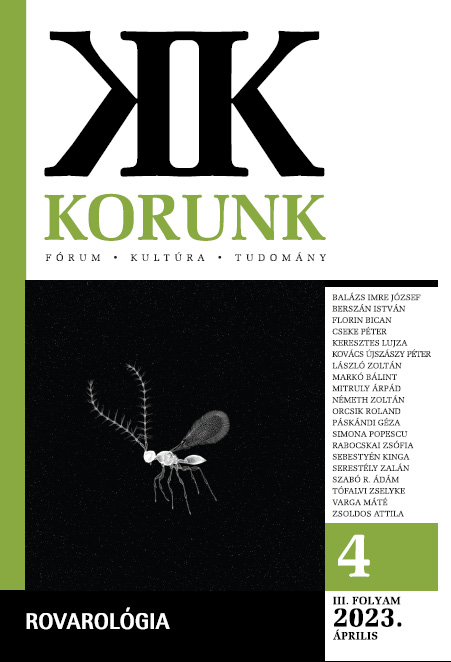Fürkészek, táplálékhálózatok, ökológiai kontextusok. Beszélgetés a rovaréletformák kutatási irányairól
Parasitoids, Food Webs, Ecological Contexts. A Dialogue
Author(s): Zoltán László, Imre József BalázsSubject(s): Human Ecology, Environmental interactions
Published by: Korunk Baráti Társaság
Keywords: natural enemies; solitary bees; pest management; pollination; entomology
Summary/Abstract: Two important applied areas of entomology are the ecology of pollinators and natural enemies. These two areas should be deeply implemented into the education because of their importance. Hence the use of the easily available communities in teaching and promoting materials is essential to introduce it to a wider audience. Natural enemies are represented in many of the surrounding communities by hymenopterans, named “Hymenoptera parasitica”, which have a distinct way of feeding during their development: the females mostly oviposit into the bodies of different developmental stages of arthropods, but mainly insects, then their larvae consume the body of their host usually from the inner sides starting with the hemolymph. They provide us with a very important ecosystem service: they regulate the population sizes of various insect herbivores that consume also our crops. Pollinators are providing another essential ecosystem service: they pollinate the vast majority of plants of which many are used by us as crops. Also, a huge part from the pollinating animals is formed by hymenopterans, namely bees. The bees can be divided into honey bee-like species, which form colonies, and those which are not aggregated into highly organized social communities: the solitary bees. Solitary bees form the majority of hymenopteran pollinators, but they are not widely known as pollinators. Thus, increased efforts are needed to promote these species beyond the academic sphere, to have a wider access to the stakeholders and non-entomologists
Journal: Korunk
- Issue Year: 2023
- Issue No: 04
- Page Range: 7-16
- Page Count: 10
- Language: Hungarian

